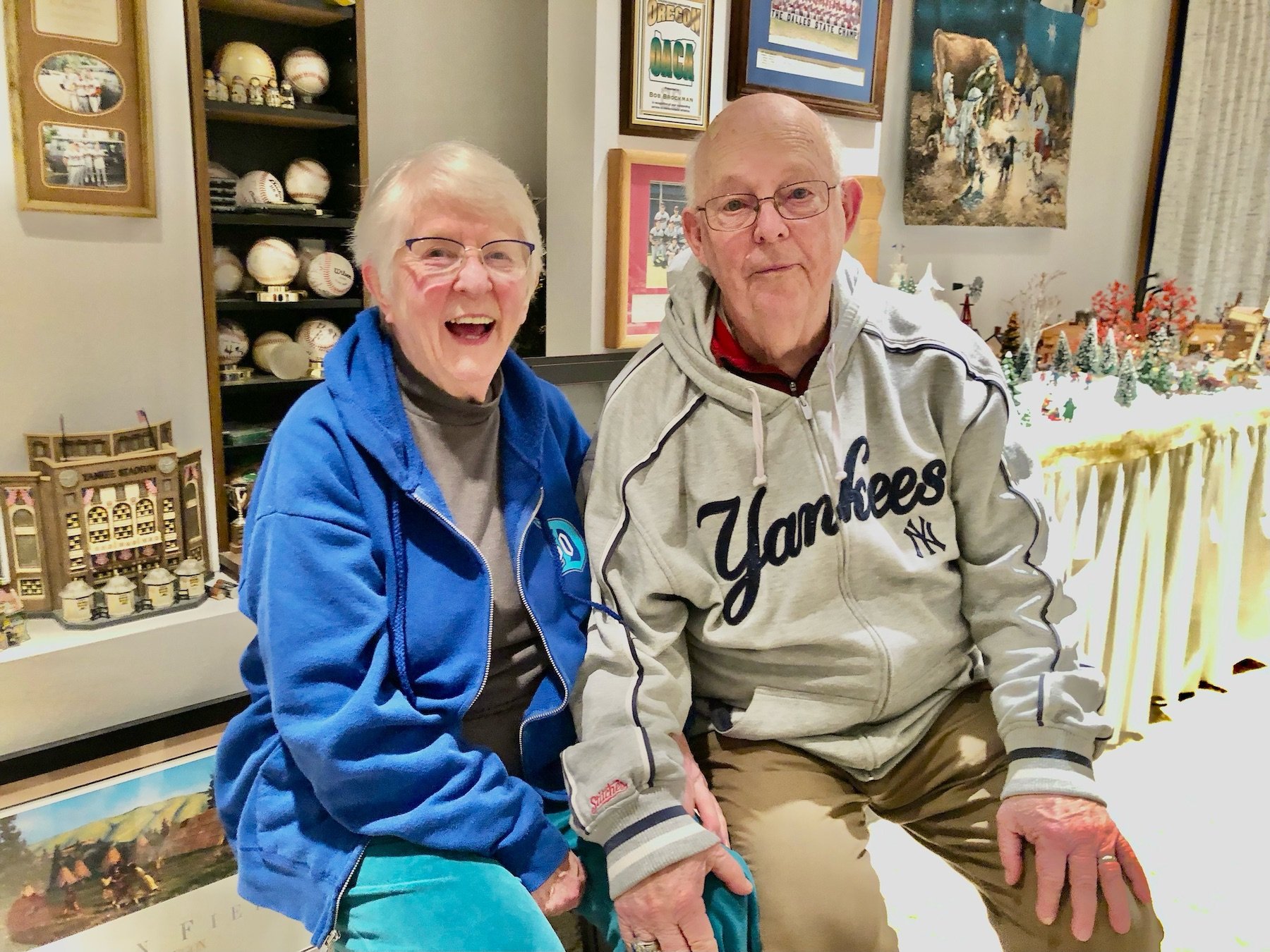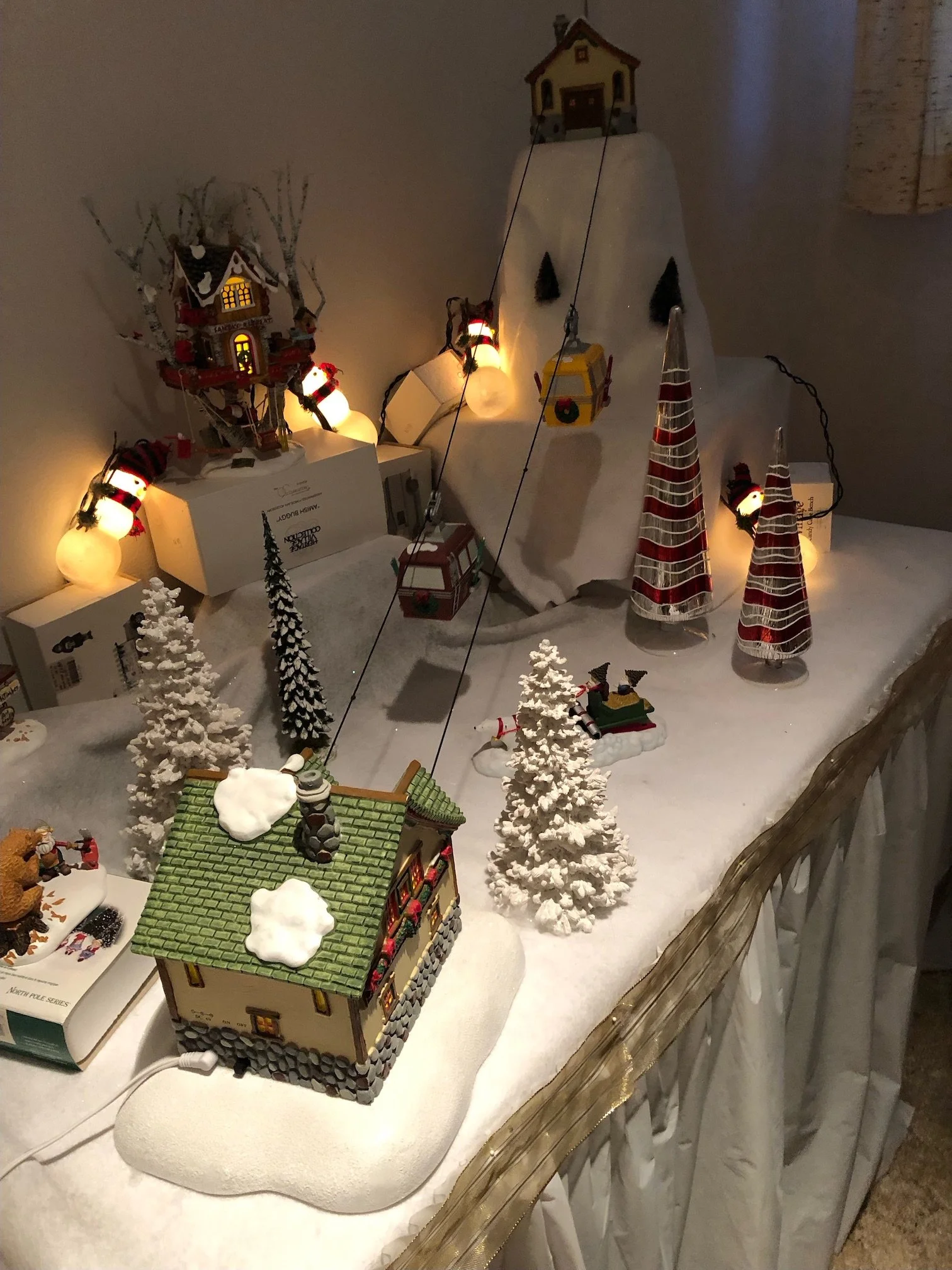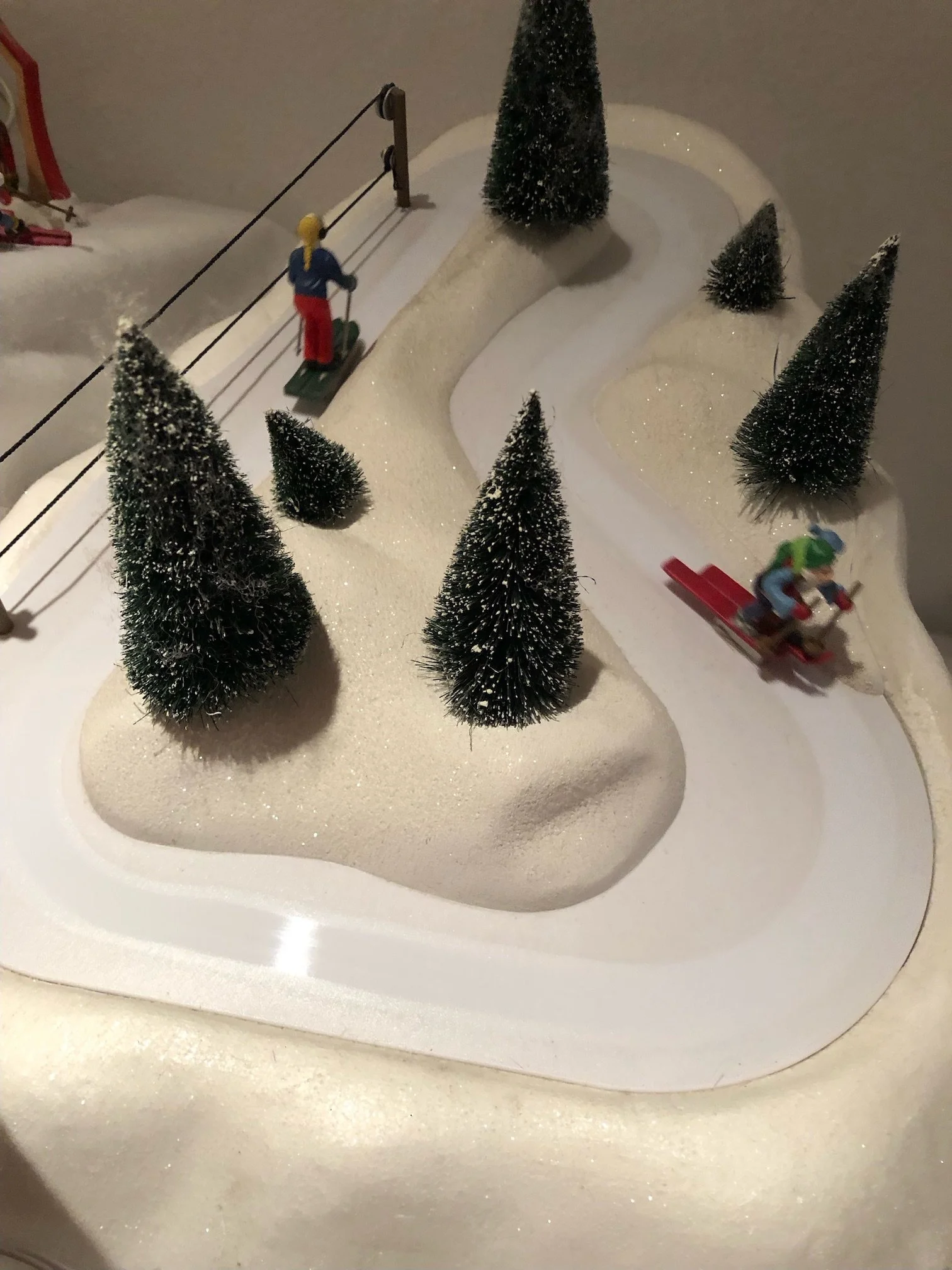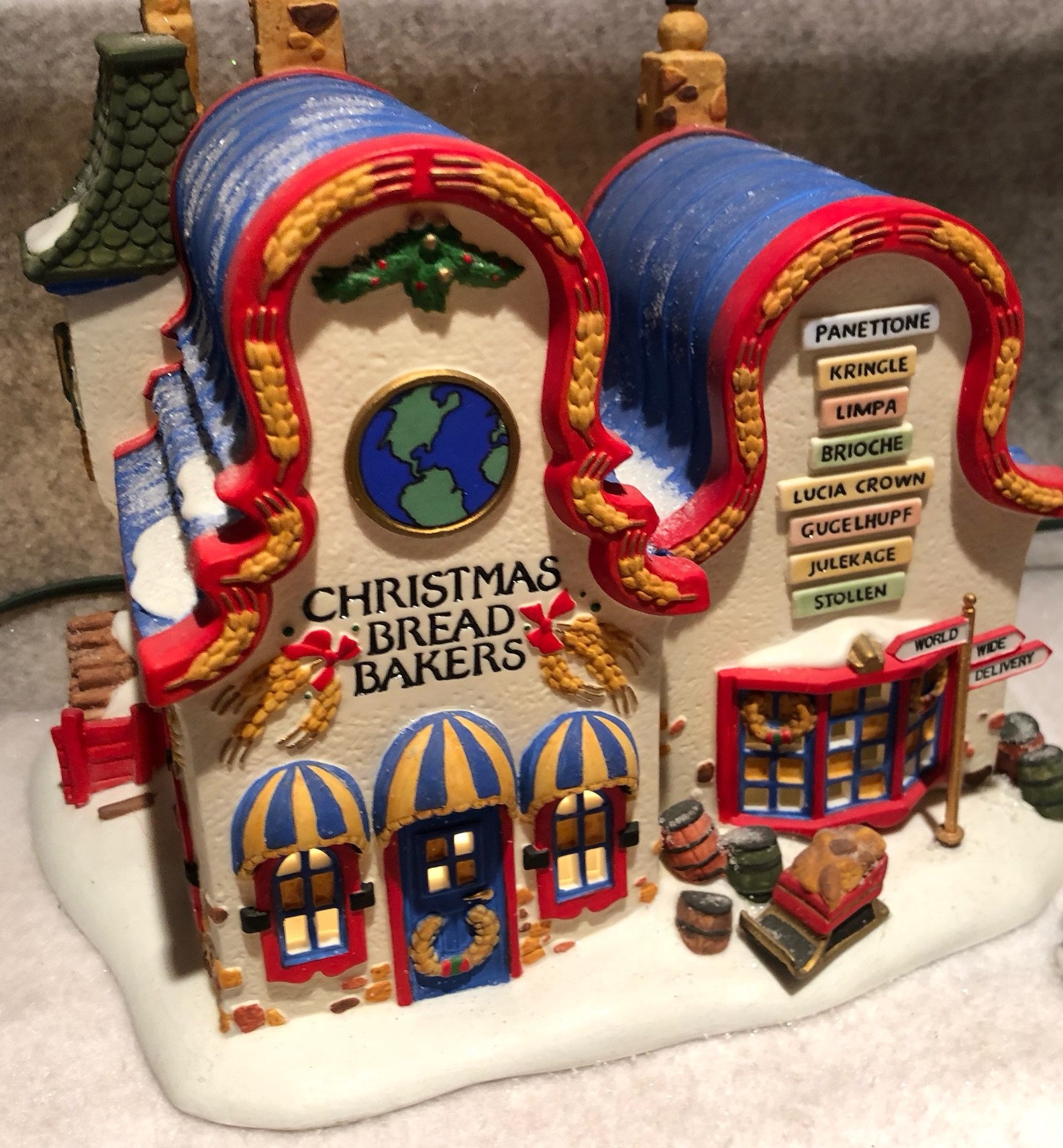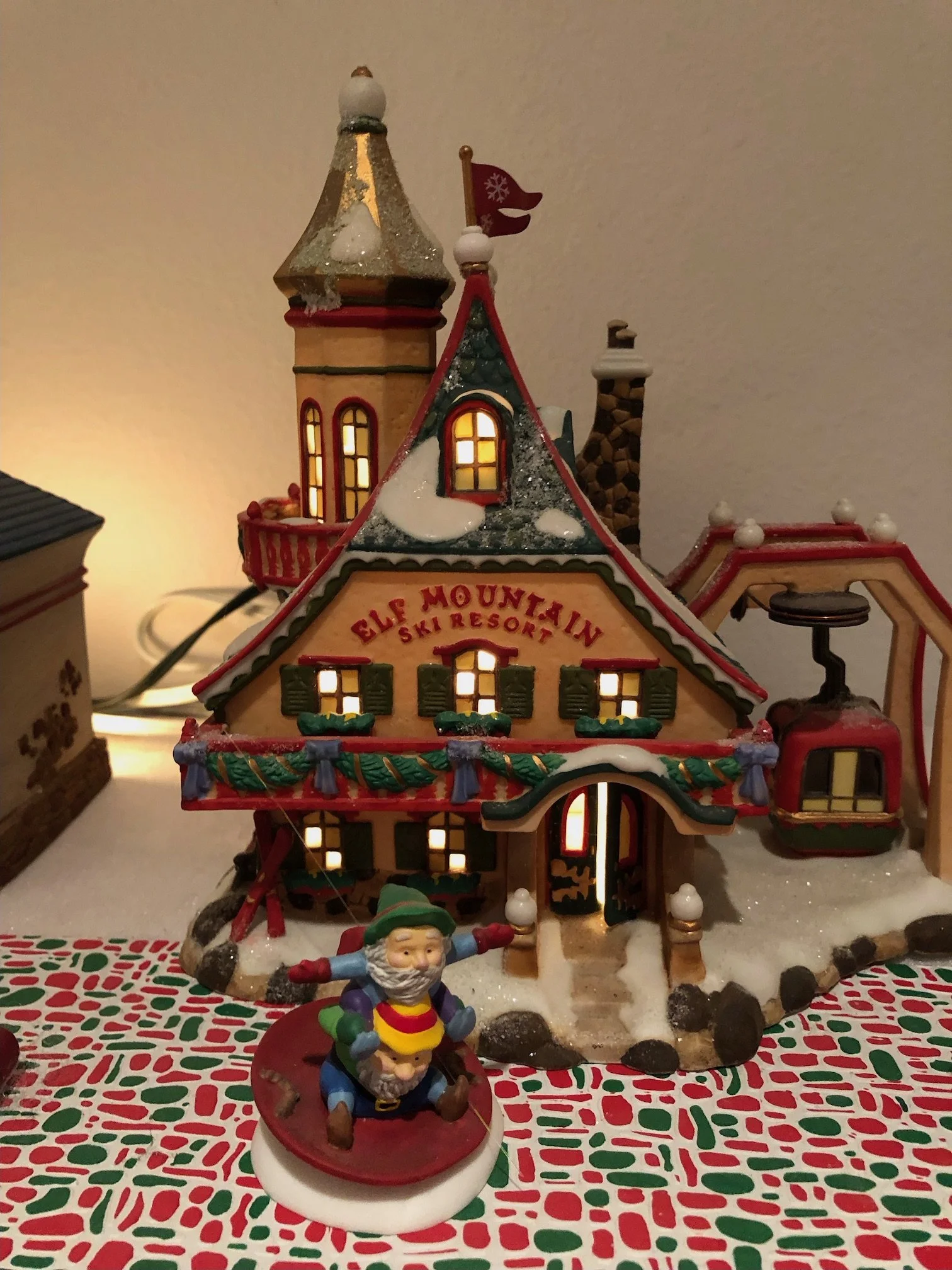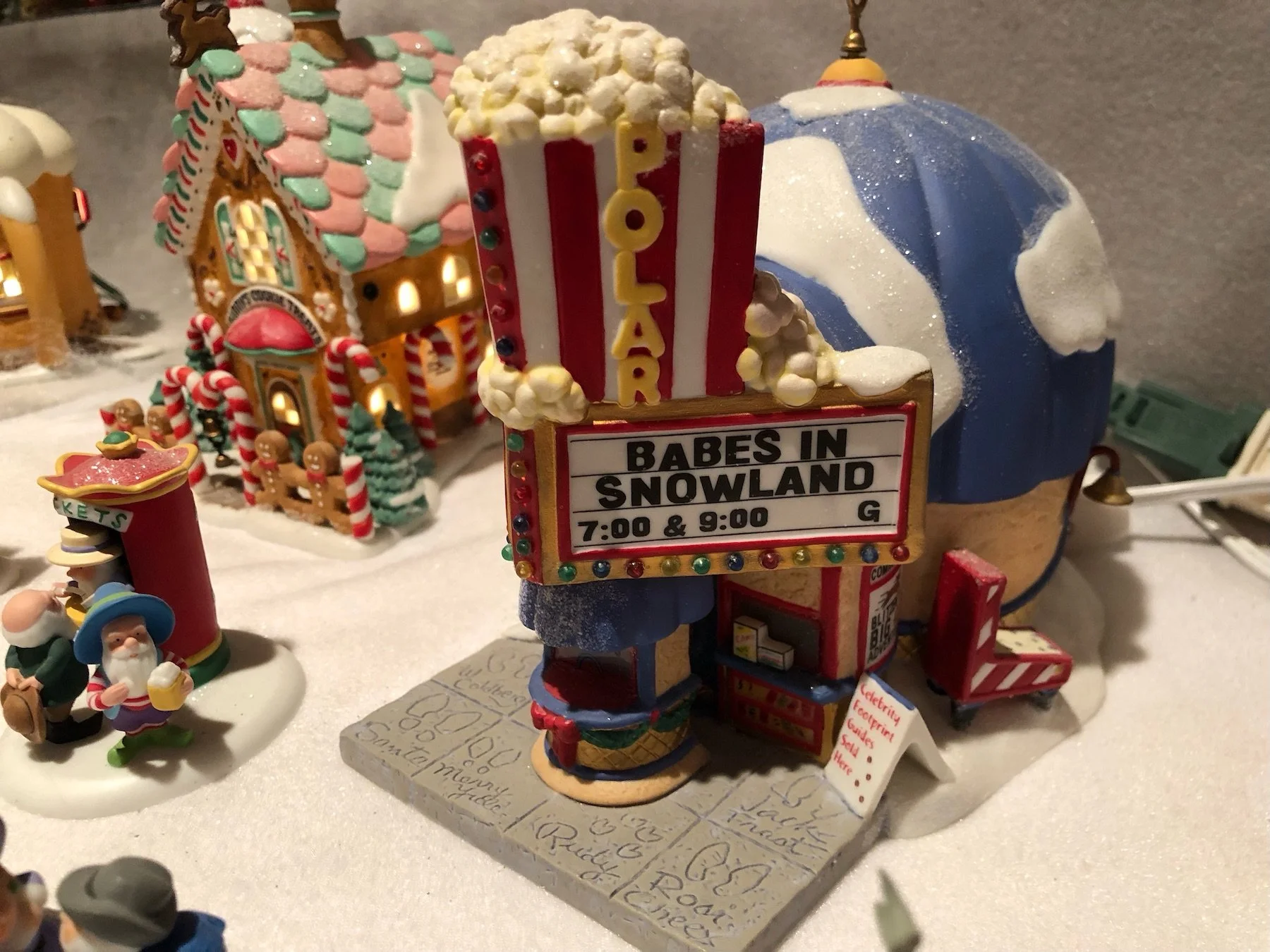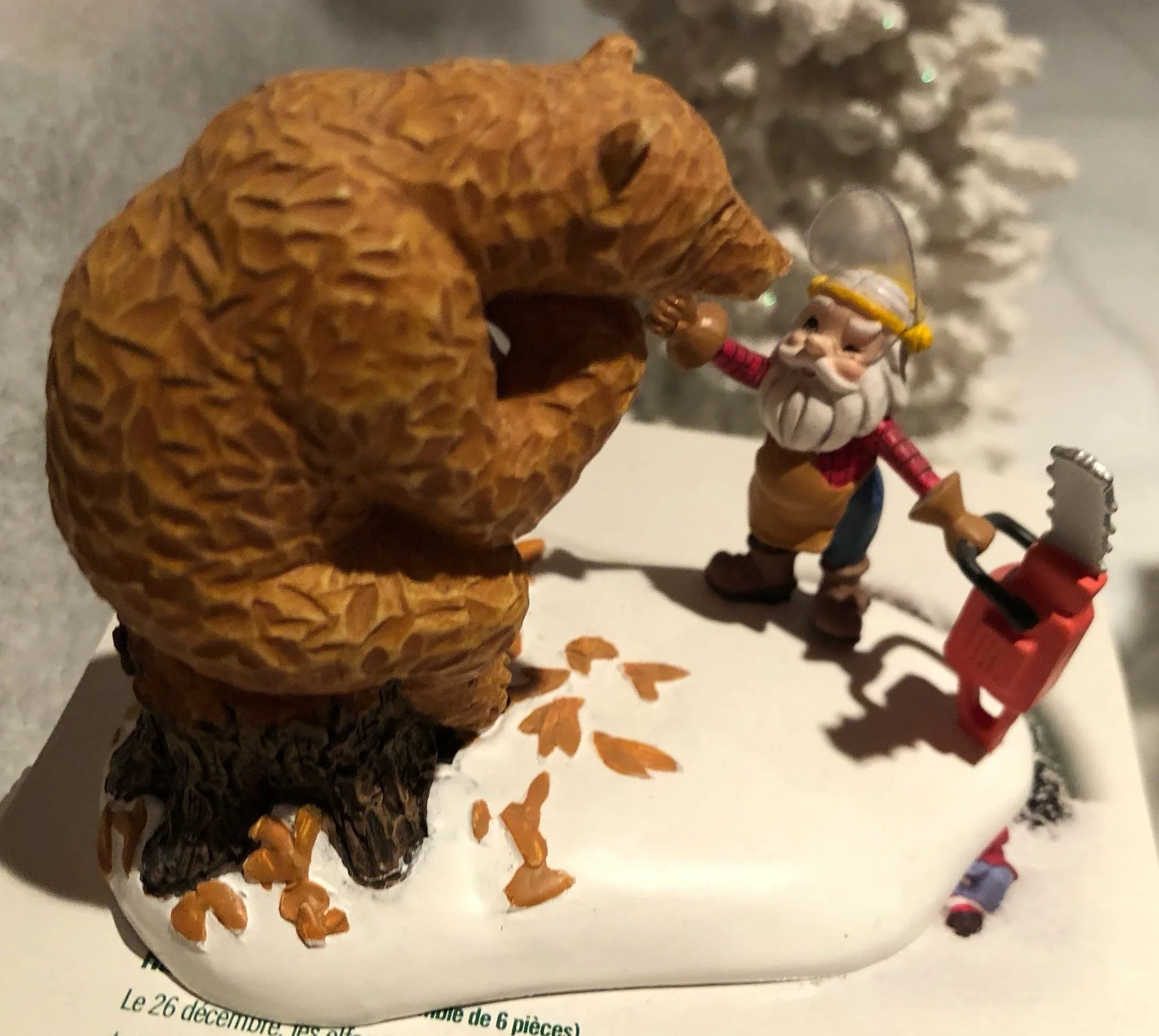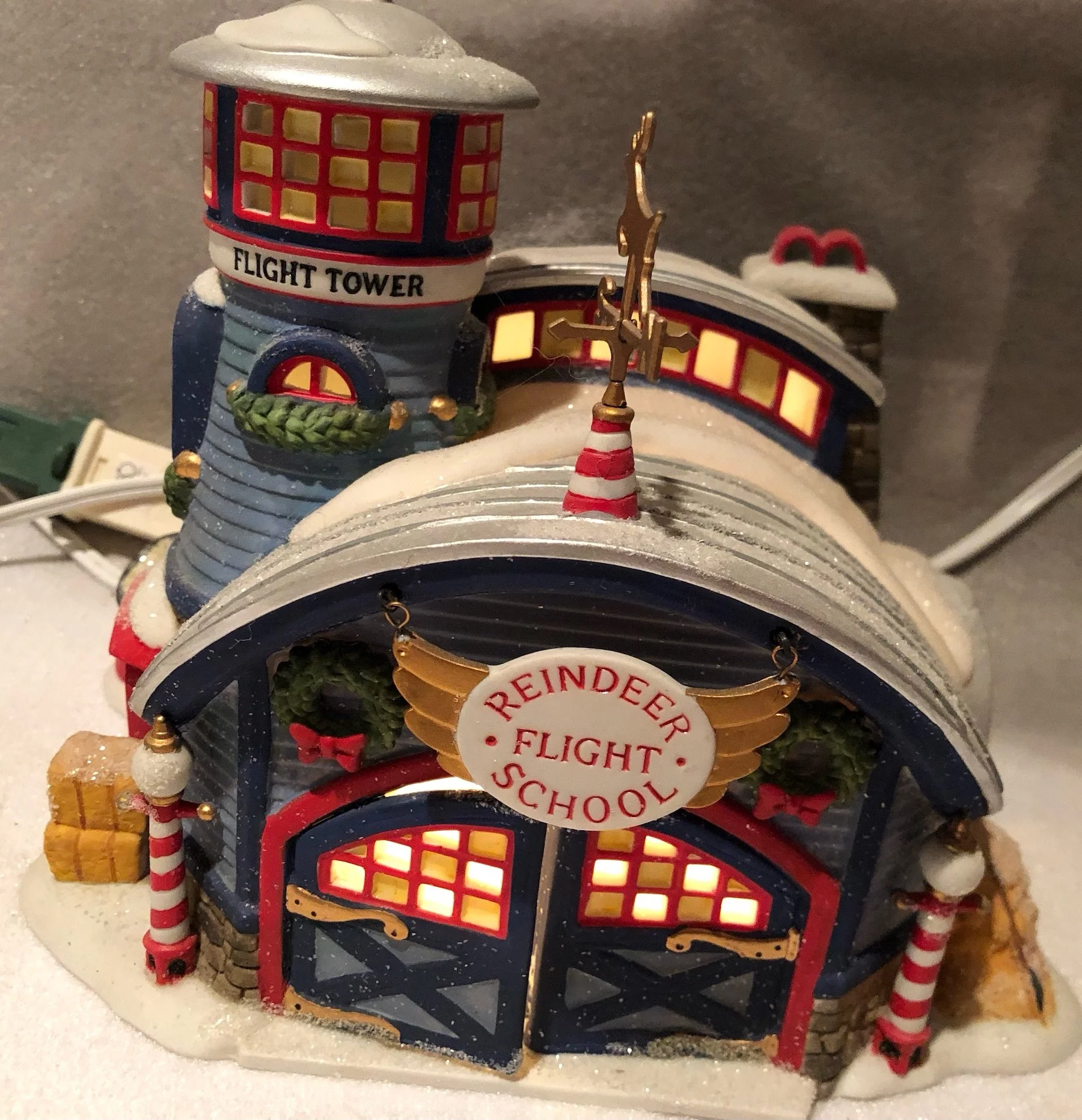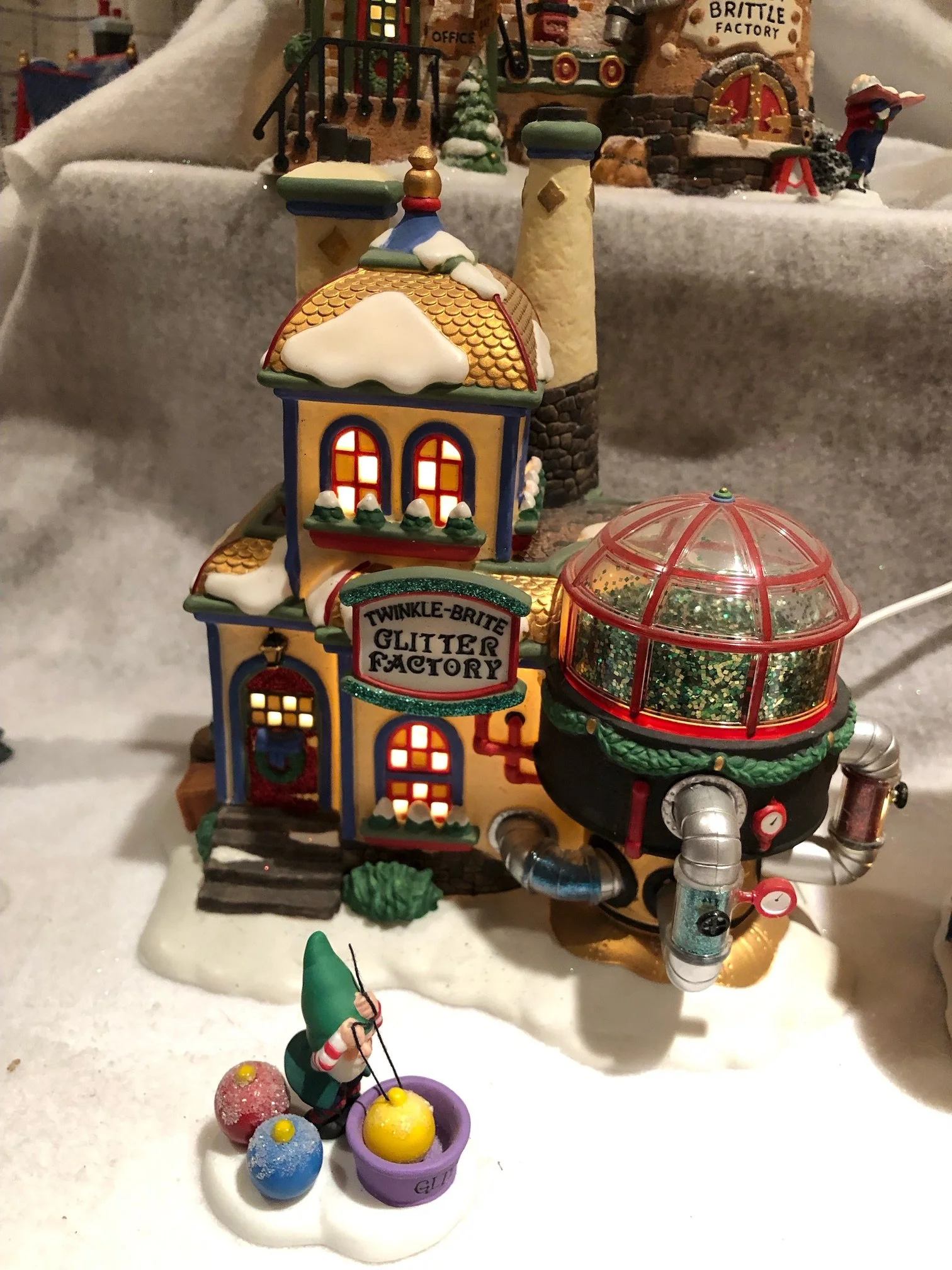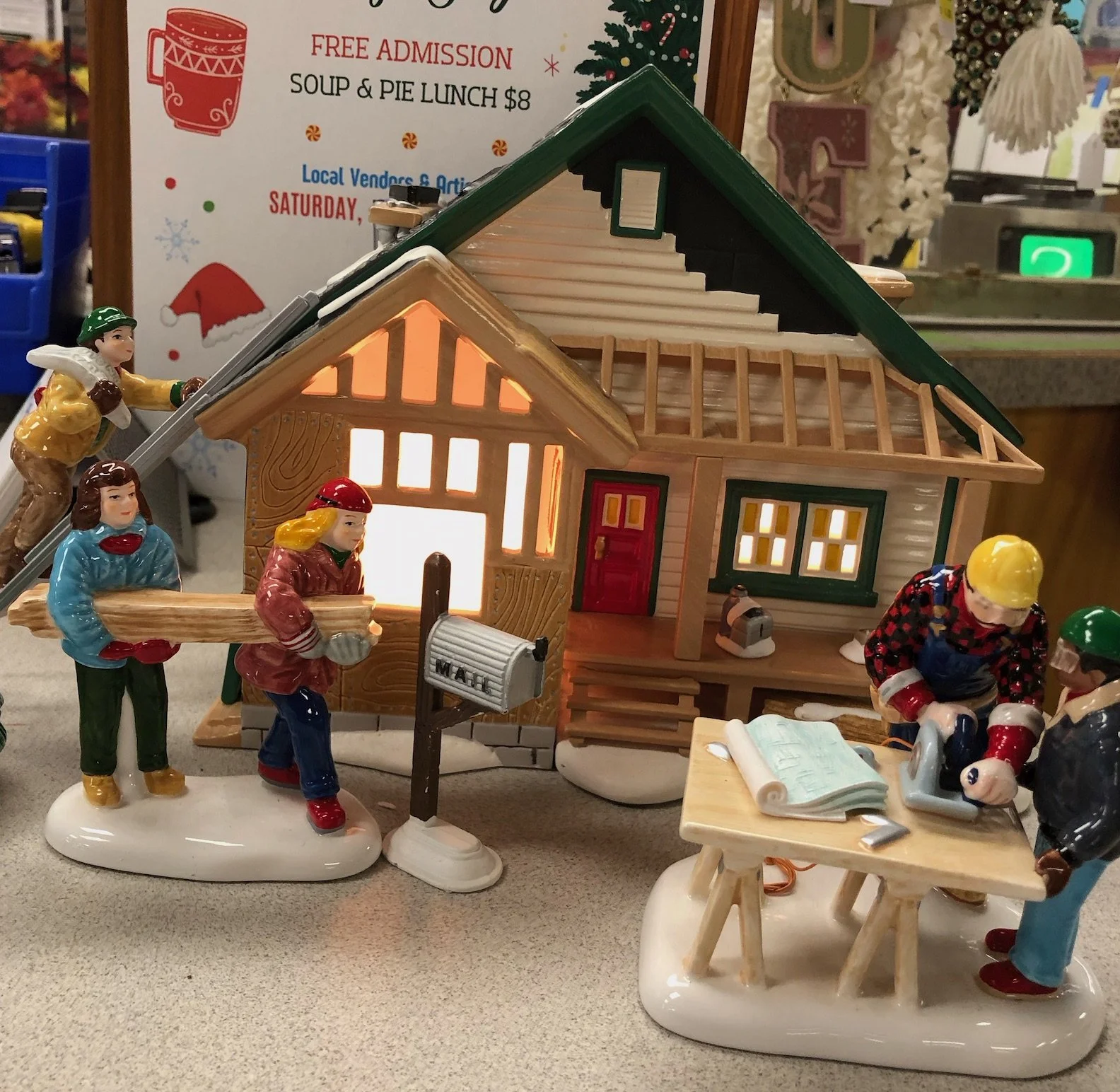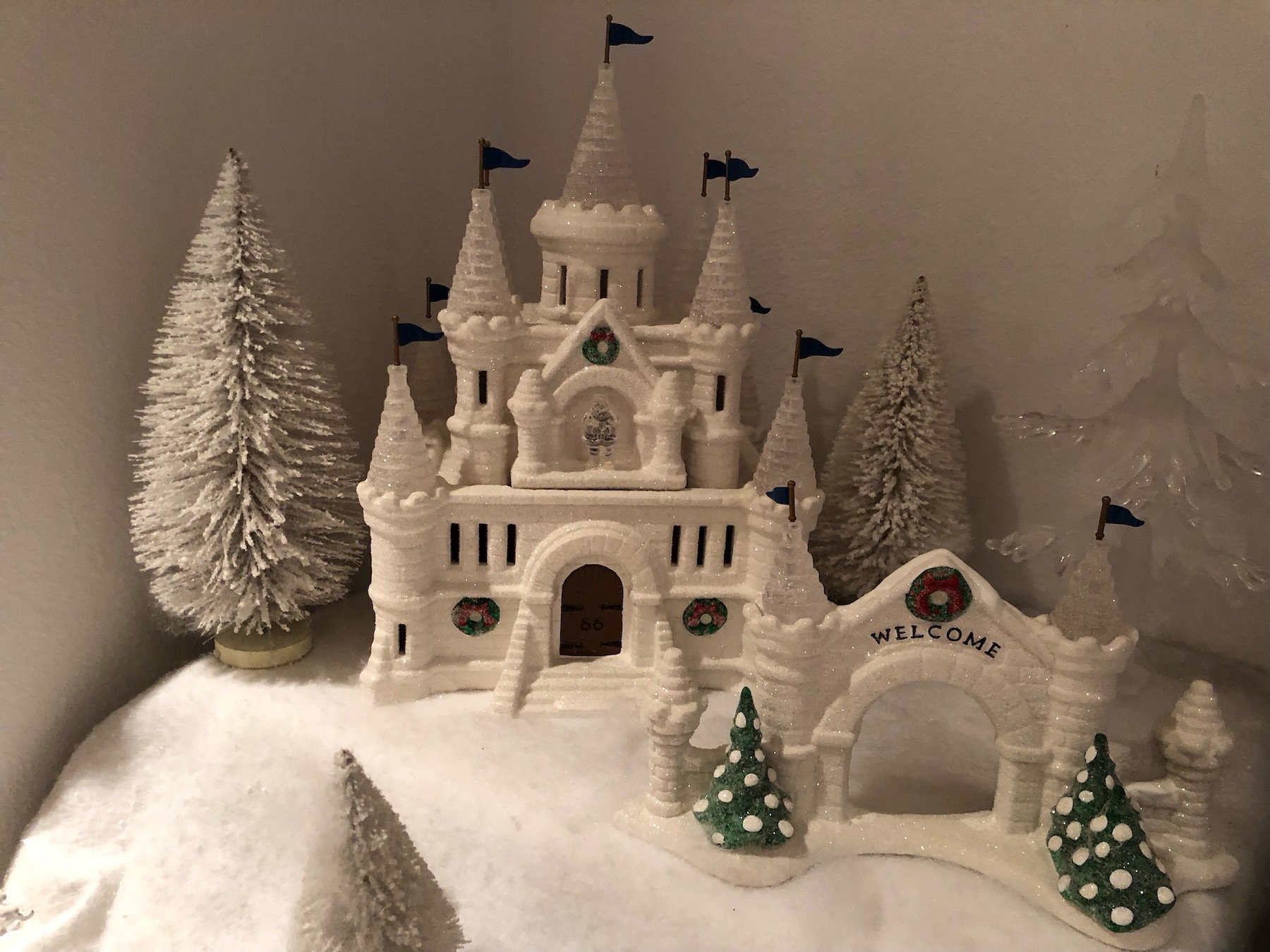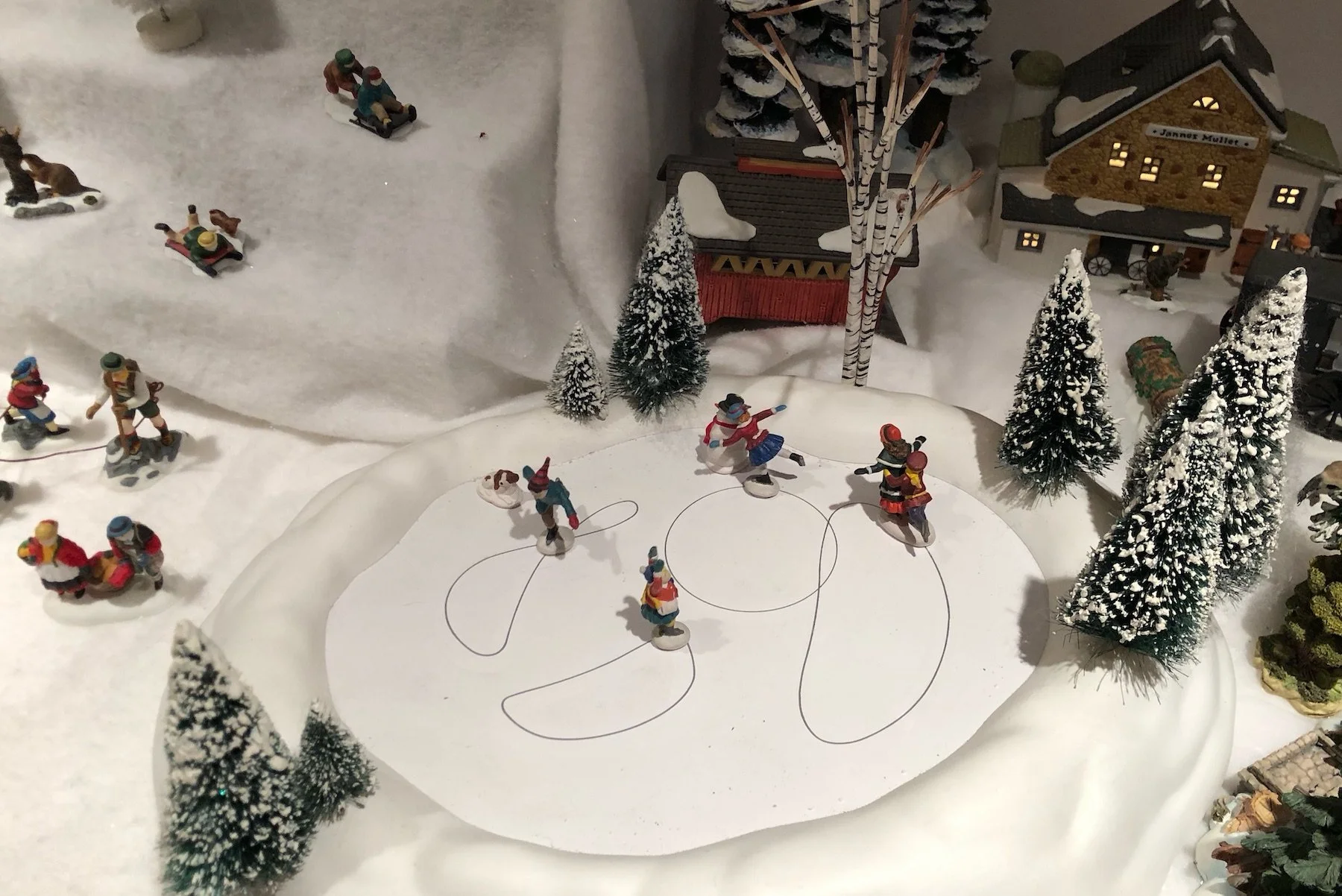Let's Get Small: Brockmans mini Christmas curation is bigger than you think
Bob and Evelyn Brockman have been collecting the Christmas spirit for 35 years and, boy, is it cute. Shrink yourself and take this holiday adventure.
By Nancy Turner
Nancy Turner
You old timers in The Dalles probably know Bob and Evelyn Brockman.
They moved here in 1966, fifty-seven years ago. Employment brought him here, teaching math at The Dalles Middle school. He also coached basketball at the high school. They’re both in their mid-'80s now. They have been married sixty-four years. Being in their company was an honor for me. I could see they still treasure each other by the glances between them, and the way they held hands.
Bob and Evelyn look like ordinary folks.
Don’t be fooled.
Sure, they raised two daughters. One lives in Vancouver, Wash. The other is in Tigard. A granddaughter moved to Missouri. Her baby girl is their great-grandchild. The Brockman’s house and yard are well kept and the neighbors never complain about them. You’d never suspect they have a secret obsessive interest, mostly hidden from the public eye.
They are hoarders.
But not in the usual sense. A true hoarder collects large amounts of something and keeps it for themselves. Well, yes, they do that. But what they collect isn’t dangerous or impeding their safety. It’s not so out of control that it overtakes their home.
I used to have an elderly neighbor who couldn’t get rid of anything. Evelyn’s garage was full, floor to ceiling, of ham radio equipment that no longer worked. Jars of canned food preserved decades ago lined shelves in the pantry. Throughout her house, she stacked magazines into mounds three feet high, creating islands with narrow paths between the piles.
Sometimes they would topple and she’d get trapped beneath a heavy load of paper. Fortunately, she always kept her cell phone in her pocket. She’d call me. I kept a key to her house for such emergencies. I’d go and dig her out from under the pile and help her back to her chair.
The Brockmans are nothing like that. Their collection is contained. There’s nothing dangerous about the things they hang onto.
And Norman Rockwell would approve.
Because what they collect is purely magical.
Thirty-five years ago the Brockmans started buying Christmas Villages.
These are miniature replicas of homes and shops you’d find in a village. On average, they are about eight to twelve inches high. The human figures are appropriate for the structure, whether it’s a cafe or a home or elves hanging Christmas lights.
Over the years, everywhere the Brockman’s went they’d search for a store that sold them. If they traveled to Seaside or Lincoln City, they’d buy figures to add to their collection. In The Dalles, local Jeanie Craig used to have a Hallmark Gift Shop in Cascade Square. They bought plenty from her.
Historically speaking, the earliest known Christmas villages weren’t villages. They were small nativity scenes. During the Renaissance, in Italy, people would set up the nativity scene live, with real animals. Eventually, this evolved into using displays without live creatures. The custom spread throughout churches and homes in Europe. As the scenes adapted to regional styles and customs, the figures began to look less like biblical figures and more like characters from local villages. Just so you know, by definition, a village is bigger than a hamlet (fewer than 100 people) and smaller than a town (between 1,500 to 50,000 people). So yes, The Dalles really is a village, despite the moniker.
Some years later, families in the Czech Republic began placing pretend villages around the nativity scene. People made houses out of paper or cardboard and used mirrors to create frozen ponds.
European immigrants brought the tradition of Christmas villages to the United States. In the late 1800s, the father of dime stores, F.W.Woolworth, traveled throughout Europe and bought German cardboard “Putz,” as they were called, to sell in the United States. German toys and glass ornaments were already popular, so when Woolworth introduced Putz houses, they were quickly embraced.
Before World War I, holiday toys and trinkets from Germany became difficult to find. This was a great opportunity for Woolworth. He worked with Japanese manufacturers to produce the beloved houses. The cardboard houses were sold in every five-and-dime store and mail-order catalog in the country. He was quite the entrepreneur.
After WWII, Americans no longer wanted German and Japanese-made goods. Attitudes changed family traditions. Interest in setting up a Christmas village each year dwindled in the 1950s and '60s. There were also other factors at play. As television became popular, the space in living rooms where villages used to be displayed was now taken over by TVs. There wasn’t room for both.
Americans still retain a deep nostalgia for Christmas villages, but usually on a smaller scale than the Brockmans. Families might have just one little house that they display at Christmas time. Except for the Brockmans, who kept collecting. It might appear as if they were compulsive, yet they weren’t out of control about it. They were methodical. They collected because it was fun. It was a shared interest that they both have enjoyed over the years. They get excited pointing out scenes in their collection.
They were like kids in a toy store.
Most of the buildings in the Brockmans’ villages are whimsical. For example, there’s a Christmas Bread Bakery, a Beard Barber, a Play-Doh Sculpture Studio, a Twinkle Bright Glitter Factory, a Popcorn and Cranberry House and a Logo Warehouse. At the Elf Mountain Ski Resor,t skiers ride up the hill using a rope tow, then glide down the snowy slope.
And let me tell you, I would stay at Santa’s Rooming House within that tiny village any day.
I need to figure out how to shrink myself.
First I’d head to the Mini Donut Shop (ha, everything here is mini), stop by the Eggnog Pub, snowshoe over to the Observatory to gaze at stars, and if I was still awake, I’d skate to the Polar Theater to watch Babes in Snowland - the early show starts at 7.
Along the way, I’d watch a man carving a huge brown bear out of wood using a chainsaw. On a more practical note, the village has a Beard Bros Sleigh Wash, a Cold Care Clinic, and a Northern Lights Fire Station. Santa hovers above it all in a hot air balloon. I guess he’s waiting for graduates from the Reindeer Flight School.
Eventually, it got to be difficult for Bob and Evelyn to put so many objects away after Christmas, and then unpack them again the next year. They wanted space to put up tables and leave the display up year-round. They designed a room with numerous electrical outlets along the walls and on the floor, down the center of the room.
The houses in their villages required electricity for their little twinkling lights. The trains, ice skaters on ponds and skiers going up and down slopes, the gondola, all needed power. The Brockmans used Evelyn’s retirement funds to finance this addition to their house. They imagined they’d only need one large room about ten feet wide and thirty feet long.
No windows.
They saw no purpose for windows since they’d have numerous ceiling lights installed to illuminate their villages. It was their architect who convinced them to install a couple of windows in the new addition. He was thinking of the resale value of their house.
The room dedicated to villages has two very long tables covered with white cloth. Bob used to put cotton on the surface but it got tangled in the train wheels. There’s an entire section with houses that are copies of real houses in England. Most of the rest are fantasy houses, stores, and shops designed by artists.
If you pull up the white curtains hanging from the tables you’ll find the area underneath stuffed with boxes. More sets. But that’s not all.
If you look out a window you’ll see their 10’ by 40’shed. More than three decades ago, the students in The Dalles High School shop class built it for them. The Brockmans paid for the materials; the kids did all the labor. Having a shed meant the Brockmans could continue to collect things and not have them pile up in the living room. Their collections are not helter-skelter like my friend, Evelyn’s. All is carefully organized and tidy.
About thirty years ago a single mother and six-year-old daughter had lived next door to The Brockmans. The mother trusted Bob and Evelyn. The little girl was allowed to visit by herself. She was drawn specifically to the room with hundreds of villages. Bob couldn’t remember her name, but he fondly reminisced about how the girl told him exactly where each human or animal figure should be placed. She loved to arrange the scenes.
In one village scene, there is a copy of homes from Equihen Plage, a small seaside village on the northern coast of France. It is famous for its inverted boat houses. Old boats were dragged to high ground, turned upside down, and made into homes. The replica in Brockmans' collection is painted black like the tar that covered roofs to keep them watertight. If you like sleeping in a small dark room, you can go to France and rent one of these unique houses. In Airbnb terminology, this would be called, “cozy.” If you can shrink to the size of an elf, call Bob for a reservation.
One time, Bob and Evelyn were on vacation, probably along the Oregon coast, exploring touristy shops.
Evelyn had gone off to look at something when Bob spotted a vendor selling a Christmas village house just like the inverted boat houses in France. That was a rare find, more so because it was white. Very few were painted white. He wanted to buy it, so he went to find Evelyn to see what she thought. He returned to the shop as quickly as he could, but by then it had sold for over $1,000. He never found another one like it.
On a personal note, I’m clearly the right person to be writing about someone head-over-heels about collecting something, especially one that has to do with Christmas. You can read my article, “Musing of a Nativity Set Collection,” published in the CCCNews on Dec. 11, 2022.
To see a Christmas village, stop by the ReStore in The Dalles. On display is a house with figures of builders constructing a house for Habitat for Humanity. Look closely. It’s not all men working. Two women are carrying lumber. Very charming. NFS
If you have spare change in your pocket or are willing to refinance your home, you can purchase Christmas Village houses and figures on Etsy, eBay, Amazon, Lemax (in Hong Kong), and Department 56 (Minnesota.) Google “Department 56” to watch a video of the process of making them.
Support Local News
Available to all. Funded by readers.

